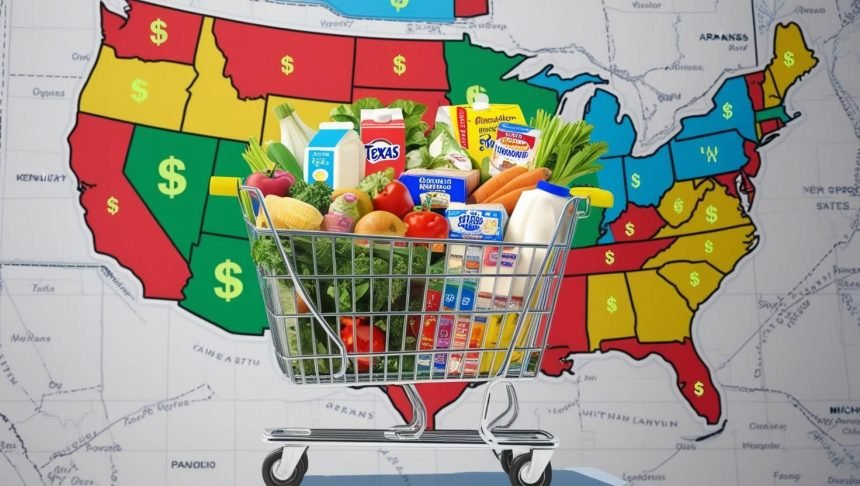As of January 2025, the landscape of grocery prices across the United States reveals significant disparities, influenced by factors such as local economies, supply chain logistics, and regional demand.
Understanding these variations is crucial for financial planning and budgeting, especially for individuals and families aiming to optimize their grocery expenditures.
National Trends in Grocery Prices
Nationally, grocery prices have experienced fluctuations due to various economic factors:
- Inflation Rates: In 2023, U.S. food-at-home prices increased by 5% compared to 2022, a deceleration from the 11.4% rise observed in 2022. Economic Research Service
- Commodity Prices: The prices of specific food items have seen significant changes. For instance, the price of eggs increased by 32.2% in 2022 but only saw a 1.4% rise in 2023, indicating a stabilization in certain commodity prices. Statista
- Regional Variations: Despite national trends, regional differences remain pronounced. States like Hawaii and Alaska continue to have the highest grocery bills, with residents spending approximately $333.88 and $328.71 per week, respectively.
Top 5 States with the Lowest Grocery Costs
Based on wymt.com data, the following states offer the most affordable grocery prices:
- Wisconsin: Households in Wisconsin spend an average of $221.46 per week on groceries, making it the state with the lowest grocery costs in the nation.
- Iowa: Following closely, Iowa residents incur an average weekly grocery expense of $227.32.
- Nebraska: In Nebraska, the average household spends $235.12 per week on groceries.
- Michigan: Michigan households have an average weekly grocery bill of $236.38.
- Indiana: Rounding out the top five, Indiana residents spend an average of $239.11 per week on groceries.
Factors Contributing to Lower Grocery Costs in These States
Several elements contribute to the lower grocery expenses observed in these states:
- Agricultural Proximity: States like Wisconsin, Iowa, and Nebraska are prominent agricultural producers, reducing transportation costs and supply chain complexities, which in turn lowers retail prices.
- Lower Cost of Living: Regions with a generally lower cost of living often experience reduced operational costs for retailers, allowing for more competitive pricing.
- Market Competition: A higher density of grocery stores can lead to competitive pricing, benefiting consumers through lower costs.
Implications for Financial Planning
For individuals and families, especially those residing in or relocating to states with higher grocery costs, it’s essential to consider these expenses in financial planning. Strategies to mitigate higher grocery expenses include:
- Budgeting: Allocating a specific portion of income to groceries and adhering to it can help manage expenses effectively.
- Smart Shopping: Utilizing coupons, loyalty programs, and shopping during sales can result in significant savings.
- Meal Planning: Planning meals in advance can reduce impulsive purchases and food waste, leading to cost savings.





